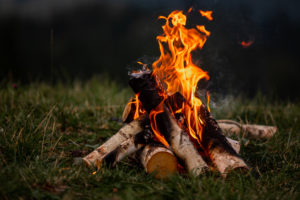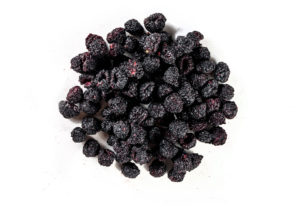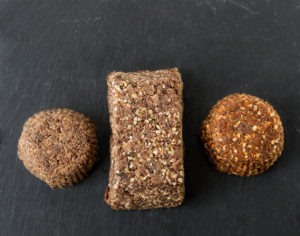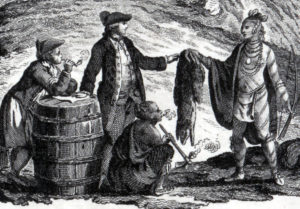Read the Following Selection
Read the following selection, or click on the play button below to listen aloud.
Indigenous Women and the Fur Trade
Beginning in the early 1500s, Indigenous women were vital to the fur traders who came to Canada to explore the country, buy furs, and ship them back to Europe. Without the help of these women, the fur traders would not have survived.

Indigenous women knew the best places to set up camp and how to prepare a campsite.
Knowledge of the Land
Indigenous women acted as guides and interpreters for the fur traders. The women knew the cultures of the various Indigenous groups, as well as many of the languages. They could guide the Europeans through wilderness trails and along Canada’s rivers and lakes.
As well, Indigenous women knew the best places to set up camp and how to prepare a campsite. They gathered firewood, lit fires, cooked meals, and knew how to make comfortable beds using furs and tree boughs.
Food for Survival
The Indigenous women knew which leaves, roots, shoots, fruits, vegetables,

Sun-dried blackberries
and berries could be eaten. They knew how to fish and how to trap animals for food, and how to turn them into delicious meals over the campfire.
Indigenous women also knew how to preserve food so that it could be eaten throughout the long, cold winters when fresh food was hard to find. They dried berries and other fruits in the sun or over a fire. The women also ground corn into a meal that they could store and use for making bread when needed.

Pemmican
Pemmican is an Indigenous food that fur traders especially liked. It is light, delicious, high in energy, and lasts a long time.

Canadian fur traders
No wonder many Indigenous people still make it today. Indigenous women also made a flatbread called bannock that is still popular today, and some women made a corn stew known as sagamit.
Preparing Furs
Fur traders depended on Indigenous women to clean and prepare furs so they could be sent to Europe, where they would be sold for high prices. The women knew where to find the animals with the best skins, and how to trap the animals. The women also knew how to scrape, stretch, and dry the skins.
From the skins and furs, Indigenous women sewed moccasins, coats, mittens, and leggings. For warmth, they also wove blankets and used furs as blankets.
Now, show what you know!
Complete some questions about the reading selection by clicking “Begin Questions” below.









